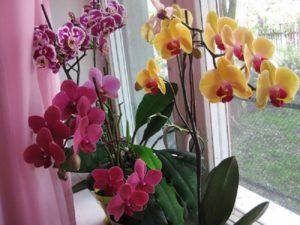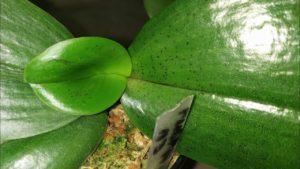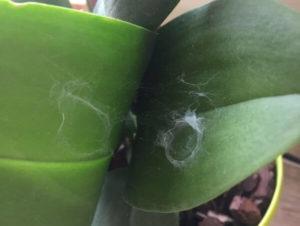Scale insect on an orchid and 11 different insects harmful to a flower
Everyone knows such beautiful home flowers as orchids. They attract the eyes of others and create harmony in the room. They are quite whimsical and need careful care. Some insects can cause serious damage to the flower.
Content
Orchids and the growing process
By themselves, beautiful orchids need some care. In view of their growth characteristics, aerial roots and love to bloom in the cold season, there are a number of requirements that must be observed so that harmful insects do not appear:
- Maintain proper humidity, but do not exaggerate.
- Timely feed the flowers.
- At the first sign of infection or disease, immediately take the necessary measures.
- Leave new plants in quarantine, do not immediately place them with the main pets.
Orchid pests
Many insects can inhabit orchid pots. Some affect only the leaves, and some also the roots.
Root mealybug
The worms eat not only the aerial part of the plant, but also the roots. Insects can have a color from light gray to yellowish or pinkish hues. The body shape is oval. Size from 2 to 4 mm. The pest drinks juices and the plant languishes.
Basically, the appearance of a mealybug can only be noticed by its fading appearance.
Mealy bug
This species can be attributed to one of the most difficult sucking parasites. It is a close relative of the scale insect, despite differences in appearance. The size is about 5 mm. Habitat - orchid flowers or flower buds.
The larvae are similar to a light gray fluff. Insects look like dirty medical cotton. Pests are carried out by larvae and adult females. They pierce plant tissues and suck out all the nutrients.
The worms secrete substances that enter the soft tissues and impair the work of the metabolic processes of the plant. The flower becomes weak and susceptible to any secondary infection.
aphid
Has a small size. Aphids unite in a colony and live on different parts of the plant. The insect quite often occupies indoor culture. The color can vary from light yellow to green camouflage.
The first sign of damage is deformed and twisted leaves. The insect is able to pierce the outer epidermis and suck out the juice.
Excess liquid turns into sticky dew. The affected part becomes sticky. At the site of the bite, the formation of fungus occurs. Favorite habitats are young apical shoots and flower stalks.
Shield and false shield
The difference between these insects lies in the absence of yellow or brown “plaques” in the scale insects. Habitat - twigs, plant trunks, back side of the leaf.
Scale insects feed on sap and secrete a sticky liquid. On this substance, a soot fungus is formed. The fungus is not particularly dangerous and is not able to infect the plant. The problem is the clogging of the stomata and pores, through which the flower breathes. The plant begins to develop worse.
whitefly
Small parasite 1 mm in size. Outwardly similar to a moth. Feeding on the juice, uneven yellowish stains and sugary nectar are formed on the leaves at the site of the bite.
The insect is afraid of cool rooms.
Sciarid or mushroom mosquito
Dark gray insects ranging in size from 3,4 to 4,5 mm. Mosquitoes settle in the upper part of the soil. Their appearance is associated with dampness and coolness. Most often it can be seen after turning off the heating.
Springtails or Podura
Habitat - wet pallet or waterlogged soil. Size from 1 to 3 mm. They move around like fleas. They do not cause significant damage to flowers.
Slugs, snails
Mollusks live in a warm, dark, humid environment if orchids are grown in greenhouses. Together with flowers, snails and slugs can get into the pot. They are not particularly dangerous for the culture, because they are not fast and eat slowly. It's easy to get rid of them.
TRIPS
There are about 7000 varieties of thrips. Habitat - the reverse side of the leaf of the plant. Black dots and thin uneven grooves indicate the presence of pests.
Larvae and adult insects feed on leaves, buds, flowers. Thrips are carriers of diseases. They are particularly hardy and grow fast.
spider mite
The tick prefers dry and warm air. Light dots and a thin cobweb are the first signs. On the back side there are small bites and a silvery coating.
There are 2 types - spider web red and spider web ordinary. They do the same damage. The difference lies in the color. The red variety has females with a reddish tinge, while the common variety has colorless to brown.
flat bed
The flat tick is considered the most inconspicuous pest. However, insects are quite common on orchids. Of the first signs, it is worth noting the presence of small punctures and a silvery coating. The pest reproduces very quickly.
Control and prevention
There are a number of general tips that will help protect orchids and serve as first aid for certain pests.
In the fight against mealybugs in advanced cases, only treatment with an enteric-contact insecticide will help.
Washing the roots with potassium permanganate and falling asleep with a dry insecticide will get rid of the root worm.
Remove the upper part of the soil mixture or take it out completely so that the roots are well washed.
Slugs are easy to lure with a cucumber or an apple. Sticky tape will help stop flying insects.
Conclusion
Under natural conditions, ladybugs and ants help fight pests. In the premises, when the first insects are found, folk remedies and insecticides are used. Timely processing will not allow parasites to destroy the orchid.
Previous


